Find Help
More Items From Ergsy search
-
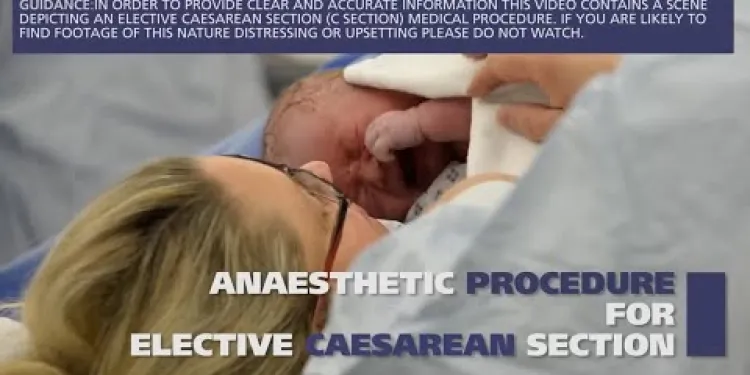
Anaesthetic procedure for elective caesarean section (C section)
Relevance: 100%
-

Spinal Anaesthesia for Caesarean Section
Relevance: 59%
-

Having a Caesarean Section
Relevance: 56%
-

Planned caesarean section
Relevance: 56%
-

Is spinal anaesthesia safe for a Caesarean section?
Relevance: 53%
-

Having a planned caesarean section
Relevance: 53%
-

Can my partner be with me during the Caesarean section?
Relevance: 49%
-

Can I breastfeed immediately after a Caesarean section under spinal anaesthesia?
Relevance: 44%
-

Your Caesarean birth
Relevance: 42%
-

Pre operative Information for Planned Caesarean Birth
Relevance: 41%
-

Can I have a natural birth after a Caesarean section?
Relevance: 36%
-

What is a Caesarean birth?
Relevance: 35%
-

Is a C-section a common procedure in the UK?
Relevance: 33%
-

Top 5 questions about having a general anaesthetic
Relevance: 30%
-

Why might a Caesarean birth be necessary?
Relevance: 29%
-

Surgery under local anaesthetic in the Minor Ops Unit at North Bristol NHS Trust
Relevance: 28%
-

Having an anaesthetic for your operation - for over 8s
Relevance: 28%
-

My General Anaesthetic: What's Going To Happen? Sarah's Story at Worcestershire Royal Hospital.
Relevance: 26%
-

Your anaesthetic choices for your planned hip or knee replacement surgery at the RUH.
Relevance: 25%
-

Children Act 1989 section 20 - Legislation
Relevance: 23%
-

Can I breastfeed after a Caesarean birth?
Relevance: 21%
-
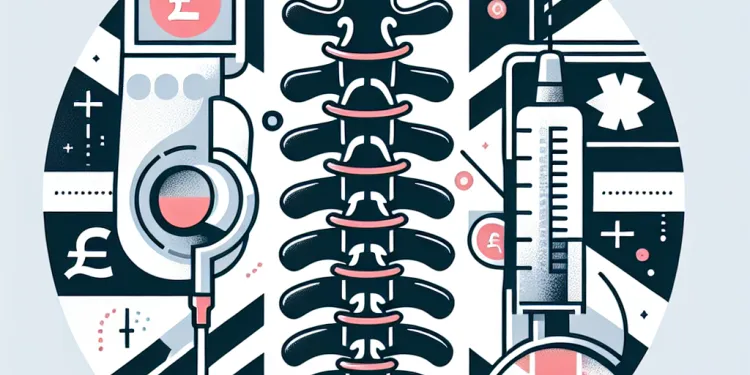
What are the alternatives to spinal anaesthesia for a Caesarean section?
Relevance: 21%
-
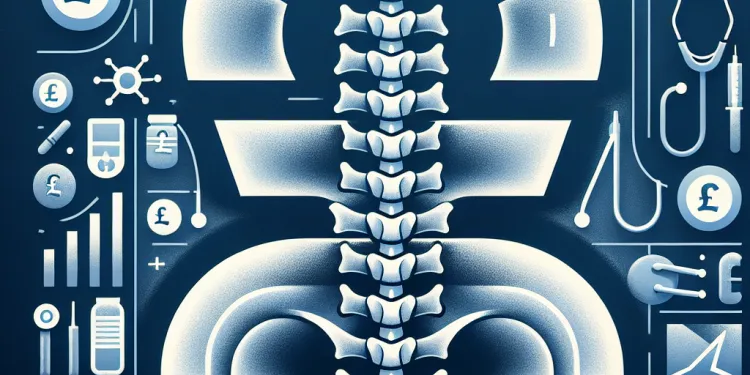
How will I be positioned for spinal anaesthesia?
Relevance: 20%
-

Endoscopy Procedures | Colonoscopy
Relevance: 19%
-

Bournemouth Digestive Diseases Centre: Gastroscopy Procedure (Subtitled)
Relevance: 19%
-

Will I feel pain during the procedure?
Relevance: 18%
-

Can a facelift be combined with other procedures?
Relevance: 18%
-

What are minimally invasive procedures for BPH?
Relevance: 18%
-

How long does it take to recover from a Caesarean birth?
Relevance: 17%
-

Having an operation or procedure at the Royal Free London
Relevance: 16%
-
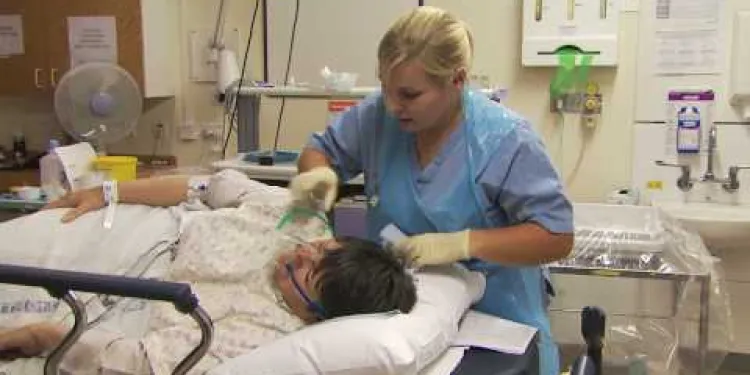
Bournemouth Digestive Diseases Centre: Endoscopy Procedure
Relevance: 16%
-

What is the procedure for receiving mail?
Relevance: 16%
-

What is the most common surgical procedure for BPH?
Relevance: 16%
-

Will I be awake during a C-section?
Relevance: 16%
-

Supreme Court Delivers Key Ruling on Electoral Reform
Relevance: 14%
-

What is spinal anaesthesia?
Relevance: 14%
-

NHS Faces Backlash Over Record-Breaking Surgery Waiting Times
Relevance: 13%
-
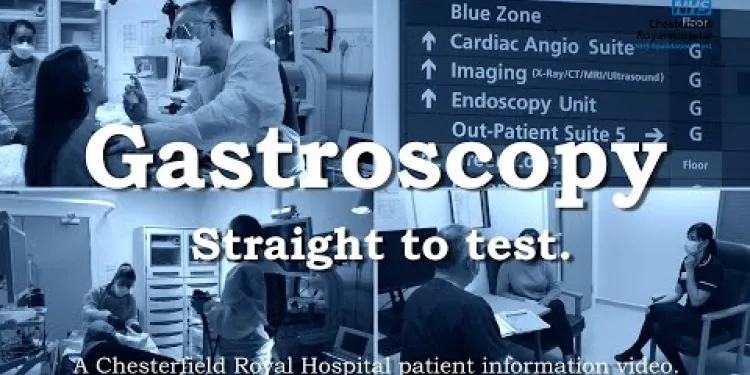
Gastroscopy - What to Expect on Referral to Chesterfield Royal Hospital
Relevance: 12%
-

How is spinal anaesthesia different from an epidural?
Relevance: 12%
-

Epidural for labour at North Bristol NHS Trust
Relevance: 12%
Anaesthetic Procedure for Elective Caesarean Section (C-Section)
Introduction to Elective Caesarean Section
An elective caesarean section is a planned surgical procedure to deliver a baby typically performed when vaginal delivery poses risks to the mother or baby. Ensuring adequate anaesthesia is crucial to keeping the mother comfortable and pain-free during the operation.Types of Anaesthesia
There are primarily three types of anaesthesia used for a C-section: 1. **Spinal Anaesthesia**: This is the most commonly used technique for elective C-sections. It involves injecting a single dose of local anaesthetic into the fluid surrounding the spinal cord, providing numbness from the chest down. 2. **Epidural Anaesthesia**: Often used during labour and can continue through the C-section if required. It involves placing a catheter in the epidural space of the spine, allowing continuous delivery of anaesthetic. 3. **General Anaesthesia**: Reserved for emergency situations or if spinal/epidural anaesthesia is contraindicated. The patient is rendered unconscious during the procedure.Preoperative Preparation
Before the procedure, the patient will undergo a thorough preoperative assessment. This includes reviewing medical history, current medications, and any potential anaesthetic allergies. Patients are advised to fast for at least six hours prior to the surgery to reduce the risk of aspiration during anaesthesia.Administration of Anaesthesia
In the operating theatre, an anaesthetist will administer the chosen anaesthetic. For spinal or epidural anaesthesia, the patient will sit or lie on their side while the anaesthetist cleans the spine area and uses a sterile needle to inject the anaesthetic. Patients may experience a tingling sensation as the anaesthetic takes effect, leading to numbness.Intraoperative Monitoring and Care
Once anaesthesia is administered, the anaesthetist will continuously monitor the patient's vital signs, such as heart rate, blood pressure, and oxygen levels, throughout the procedure. Additional medications can be administered if required, and patient comfort will be a priority.Postoperative Care and Recovery
After the C-section, the anaesthetist will supervise the initial recovery period, managing pain with medications like NSAIDs or opioids as needed. Patients will be closely monitored for any adverse reactions to the anaesthetic, and support with pain management will continue in the postnatal ward.Conclusion
Proper anaesthetic management for an elective caesarean section is vital to ensuring the safety and comfort of the mother. Spinal and epidural anaesthesia are preferred due to their effectiveness and minimal impact on the baby. With thorough preoperative assessment and careful monitoring, the anaesthetic procedure can significantly contribute to a positive birthing experience.Anaesthetic Procedure for Planned C-Section
What is a Planned C-Section?
A planned caesarean section, or C-section, is a surgery to deliver a baby. It is planned ahead of time if having the baby naturally might hurt the mother or the baby. Anaesthesia is medicine that helps the mother not feel pain during the surgery. This medicine is very important.Types of Anaesthesia
There are three main types of anaesthesia used: 1. **Spinal Anaesthesia**: This is the most common type for planned C-sections. A doctor puts a needle in the lower back to give medicine that makes the body numb from the chest down. 2. **Epidural Anaesthesia**: This type can be used during a long labour and also if you need a C-section. A small tube is put in the back to give medicine the whole time. 3. **General Anaesthesia**: This is used only in emergencies. It makes the person fall asleep and not feel anything.Getting Ready Before Surgery
Before surgery, doctors will check your health and ask about any medicine you take. They will also check if you have allergies. You should not eat or drink for 6 hours before the surgery. This is important for your safety.Giving Anaesthesia
In the surgery room, a special doctor called an anaesthetist will give you the anaesthesia. If you are having spinal or epidural anaesthesia, you will sit up or lie on your side. The doctor will clean your back and give you the medicine. You might feel a tingle, then you will feel numb.During the Surgery
While the surgery happens, the anaesthetist will check your heartbeat, blood pressure, and breathing to make sure you are okay. They can give more medicine if you need it.After the Surgery
After the C-section, doctors will help you wake up and feel comfortable. They will give you medicine to help with pain if you need it. Nurses will check on you to make sure you are okay and help with any pain.Conclusion
Having the right anaesthesia for a planned C-section is very important for keeping the mother safe and comfortable. Spinal and epidural anaesthesia are best because they are safe for the baby too. Careful checks and support make sure everything goes well and helps make the birth a happy experience.Frequently Asked Questions
What types of anaesthesia are used for an elective C section?
The most common types are spinal anaesthesia, epidural anaesthesia, and general anaesthesia. Spinal and epidural anaesthesia are preferred as they allow you to be awake during the procedure.
How does spinal anaesthesia work?
Spinal anaesthesia involves injecting a local anaesthetic into the fluid around your spinal cord, numbing the lower half of your body.
What is the difference between spinal and epidural anaesthesia?
Spinal anaesthesia is a single injection into the spinal fluid, while epidural anaesthesia involves placing a catheter in the epidural space to provide continuous anaesthetic.
Will I be awake during the C section?
Yes, if you receive spinal or epidural anaesthesia, you will be awake but numb from the abdomen down.
Can my partner be present in theatre?
In most cases, your partner can be present if you have spinal or epidural anaesthesia. However, they may not be allowed if you require general anaesthesia.
How long does the anaesthetic take to work?
Spinal anaesthesia works almost immediately, while epidural anaesthesia may take about 10-20 minutes to become fully effective.
Are there any risks associated with spinal or epidural anaesthesia?
While generally safe, there are risks such as low blood pressure, headache, or, rarely, nerve damage.
What should I expect after the anaesthetic is administered?
You will feel numbness in your lower body and possibly some pressure or tugging during the procedure; pain should be minimal or absent.
How long does the numbness last after the C section?
The numbness usually lasts a few hours. You will be monitored as sensation gradually returns.
Will I feel pain during the C section?
You should not feel pain, although you might feel sensations of pressure or tugging.
What happens if the spinal or epidural anaesthesia does not work properly?
If the spinal or epidural anaesthesia is inadequate, additional local anaesthetic may be administered or you might be converted to general anaesthesia.
Can I choose the type of anaesthesia I receive?
Your anaesthetist will discuss the options with you, taking into account medical history and preferences to decide the best choice.
What are the benefits of spinal or epidural anaesthesia over general anaesthesia?
Benefits include being awake to see and hear your baby immediately after birth, fewer risks compared to general anaesthesia, and quicker recovery times.
Can I eat or drink before my C section?
You will be advised to avoid eating and drinking for a certain period before the surgery, usually 6-8 hours for solids and 2-4 hours for clear fluids.
How is pain managed after the surgery?
Post-operative pain is usually managed with medications including paracetamol, NSAIDs, and sometimes opioids. Your anaesthetist will provide a pain management plan.
What types of medicine are used to help with pain during a planned C section?
The most common kinds of anesthesia are:
- Spinal anesthesia
- Epidural anesthesia
- General anesthesia
Spinal and epidural anesthesia are often chosen because they let you stay awake when you have the operation.
It can help to:
- Ask a nurse or doctor to explain things if you're confused.
- Use a simple medical words app to understand better.
How does spinal anaesthesia work?
Spinal anaesthesia helps to stop feeling pain in part of your body. A doctor puts medicine in your back. It makes you numb from the waist down. You can still be awake and talk, but you won't feel pain.
If you find it hard to read, you can ask someone to read it out loud to you. You can also use an app that reads text.
Spinal anaesthesia is a way to block pain in the lower part of your body. A doctor puts a numbing medicine into the liquid around your spine.
How are spinal and epidural anaesthesia different?
Spinal and epidural anaesthesia are two ways to make you feel comfortable during surgery.
Spinal Anaesthesia: This is when medicine is put into your lower back to make you numb for a short time.
Epidural Anaesthesia: This is when a tube is placed in your back to give medicine. It can keep you numb for a longer time.
If you want help with reading, you can use pictures or ask someone to explain the words. Listening to the information can also help.
Spinal anaesthesia is when the doctor gives you one injection in your back to help you not feel pain. Epidural anaesthesia is when the doctor puts a little tube in your back to keep giving you medicine so you don’t feel pain.
Try asking your doctor to use simple words and show pictures or tools they use for these procedures.
Will I be awake during the C section?
When you have a C section, doctors usually give you medicine. This medicine makes you feel sleepy but does not put you fully to sleep. You will still be awake and can see and hear things around you.
If you have questions or feel nervous, it's a good idea to talk to your doctor. Ask someone you trust to come with you to the appointment to help remember the information.
Using tools like picture guides or videos can also help you understand what will happen.
Yes, if you get a spinal or epidural anaesthesia, you will be awake. But you will not feel anything from your belly down.
Can my partner come into the room with me?
Most of the time, your partner can stay with you if you have a spinal or epidural anaesthetic. But they might not be allowed if you need to have general anaesthesia.
If you need help understanding, you can ask someone to read it with you. Using a dictionary can also help with hard words.
How long before medicine makes you numb?
It can take a few minutes for the medicine to start working. You might feel numb or tingly. If you have questions or feel worried, talk to your doctor or nurse.
Spinal anesthesia starts working fast.
Epidural anesthesia takes 10 to 20 minutes to work.
Is spinal or epidural anesthesia safe?
There can be risks with spinal or epidural anesthesia. Anesthesia is medicine to stop pain during an operation. It is usually safe, but talk to your doctor if you are worried.
Here are some tips to help understand:
- Ask lots of questions.
- Have someone with you to help listen.
- Write down what the doctor says.
This is mostly safe. But sometimes, it can cause low blood pressure, a headache, or, in rare cases, nerve damage.
What happens after I get the medicine to make me sleepy?
You might feel your legs and tummy go 'tingly' or 'numb' during the procedure. You could also feel some pushing or pulling, but it shouldn't hurt.
How long will you feel numb after a C section?
A C section is when a doctor helps a baby come out of a mother's belly. Sometimes, after this, your belly might feel numb or tingly.
It usually lasts a few hours or days. But everyone's body is different, so it might be different for you.
If you are worried or have any questions, it's good to talk to a doctor or nurse. They can help you understand what to expect.
Using some tools like a timer or calendar can help you keep track of when the numb feeling started and stopped. This can be useful if you talk about it with your doctor. Taking deep breaths and resting can also help you feel better.
The numb feeling will go away in a few hours. Doctors and nurses will watch you as the feeling comes back.
Will I feel hurt during the C section?
A C section is an operation to help a baby come out. The doctor will give you medicine so you do not feel pain. You might feel some pushing, but it should not hurt.
If you feel pain, tell the doctor or nurse. They can help you feel better.
It can help to take deep breaths or hold someone's hand.
You should not feel any pain. But you might feel some pressure or pulling.
What if the spinal or epidural anaesthesia doesn't work right?
If the medicine for numbing doesn't work well, tell the doctor or nurse. They will help you feel better. Sometimes you might need more medicine or a different kind.
If you feel any pain, let them know right away. It's okay to ask questions.
You can also ask a friend or family member to stay with you and help you feel calm.
If the spinal or epidural anaesthesia does not work well, the doctor can give you more medicine to help. If that is not enough, they might use a different method called general anaesthesia to help you feel no pain.
Can I pick the kind of medicine that makes me sleep during surgery?
Sometimes, you can help choose the sleepy medicine. A doctor called an anesthetist will talk to you. They will help you pick the best one. You can ask questions too.
Here are some tips:
- Ask the doctor what each kind does.
- Tell the doctor if anything worries you.
- Bring someone you trust to help you listen and remember.
Your doctor will talk to you about what can help you feel less pain. They will think about your health and what you like best. Together, you will choose what is best for you.
Why is spinal or epidural anaesthesia sometimes better than general anaesthesia?
Good things about this are:
- You can see and hear your baby right away after they are born.
- There are fewer risks than with other types of sleep medicine.
- You get better faster.
Some tools that can help you understand better are:
- Talking to a friend or family member about it.
- Using pictures to help explain things.
- Asking your doctor to explain anything you don't understand.
Can I Eat or Drink Before My C Section?
Before your C section, do not eat or drink anything. This helps keep you safe during the surgery.
Here are some tips to help you remember:
- Stop eating or drinking at the time your doctor tells you.
- Use a clock or set an alarm to remind you.
- If you are unsure, ask your doctor or nurse for help.
The doctor will tell you not to eat or drink before the surgery. You should stop eating solid food about 6 to 8 hours before. Stop drinking clear liquids about 2 to 4 hours before.
How do you feel better after the operation?
When you have an operation, it can hurt afterward. Doctors help you feel better with medicine. This medicine can be pills or a needle. You might also use a hot or cold pack. Always tell the doctor if it still hurts.
Other things that can help are resting and deep breathing. Listening to music or watching a movie can also make you feel good.
If you have questions, always ask the nurse or doctor. It is important to talk about how you feel.
After surgery, you might feel some pain. Doctors give medicine to help with this. You might take paracetamol or other pills called NSAIDs. Sometimes, you might need stronger medicine called opioids. Your anaesthetist (the sleep doctor for surgery) will tell you how to take these medicines.
Useful Links
- Ergsy carfully checks the information in the videos we provide here.
- Videos shown by Youtube after a video has completed, have NOT been reviewed by ERGSY.
- To view, click the arrow in centre of video.
- Most of the videos you find here will have subtitles and/or closed captions available.
- You may need to turn these on, and choose your preferred language.
- Go to the video you'd like to watch.
- If closed captions (CC) are available, settings will be visible on the bottom right of the video player.
- To turn on Captions, click settings .
- To turn off Captions, click settings again.
More Items From Ergsy search
-

Anaesthetic procedure for elective caesarean section (C section)
Relevance: 100%
-

Spinal Anaesthesia for Caesarean Section
Relevance: 59%
-

Having a Caesarean Section
Relevance: 56%
-

Planned caesarean section
Relevance: 56%
-

Is spinal anaesthesia safe for a Caesarean section?
Relevance: 53%
-

Having a planned caesarean section
Relevance: 53%
-

Can my partner be with me during the Caesarean section?
Relevance: 49%
-

Can I breastfeed immediately after a Caesarean section under spinal anaesthesia?
Relevance: 44%
-

Your Caesarean birth
Relevance: 42%
-

Pre operative Information for Planned Caesarean Birth
Relevance: 41%
-

Can I have a natural birth after a Caesarean section?
Relevance: 36%
-

What is a Caesarean birth?
Relevance: 35%
-

Is a C-section a common procedure in the UK?
Relevance: 33%
-

Top 5 questions about having a general anaesthetic
Relevance: 30%
-

Why might a Caesarean birth be necessary?
Relevance: 29%
-

Surgery under local anaesthetic in the Minor Ops Unit at North Bristol NHS Trust
Relevance: 28%
-

Having an anaesthetic for your operation - for over 8s
Relevance: 28%
-

My General Anaesthetic: What's Going To Happen? Sarah's Story at Worcestershire Royal Hospital.
Relevance: 26%
-

Your anaesthetic choices for your planned hip or knee replacement surgery at the RUH.
Relevance: 25%
-

Children Act 1989 section 20 - Legislation
Relevance: 23%
-

Can I breastfeed after a Caesarean birth?
Relevance: 21%
-

What are the alternatives to spinal anaesthesia for a Caesarean section?
Relevance: 21%
-

How will I be positioned for spinal anaesthesia?
Relevance: 20%
-

Endoscopy Procedures | Colonoscopy
Relevance: 19%
-

Bournemouth Digestive Diseases Centre: Gastroscopy Procedure (Subtitled)
Relevance: 19%
-

Will I feel pain during the procedure?
Relevance: 18%
-

Can a facelift be combined with other procedures?
Relevance: 18%
-

What are minimally invasive procedures for BPH?
Relevance: 18%
-

How long does it take to recover from a Caesarean birth?
Relevance: 17%
-

Having an operation or procedure at the Royal Free London
Relevance: 16%
-

Bournemouth Digestive Diseases Centre: Endoscopy Procedure
Relevance: 16%
-

What is the procedure for receiving mail?
Relevance: 16%
-

What is the most common surgical procedure for BPH?
Relevance: 16%
-

Will I be awake during a C-section?
Relevance: 16%
-

Supreme Court Delivers Key Ruling on Electoral Reform
Relevance: 14%
-

What is spinal anaesthesia?
Relevance: 14%
-

NHS Faces Backlash Over Record-Breaking Surgery Waiting Times
Relevance: 13%
-

Gastroscopy - What to Expect on Referral to Chesterfield Royal Hospital
Relevance: 12%
-

How is spinal anaesthesia different from an epidural?
Relevance: 12%
-

Epidural for labour at North Bristol NHS Trust
Relevance: 12%


